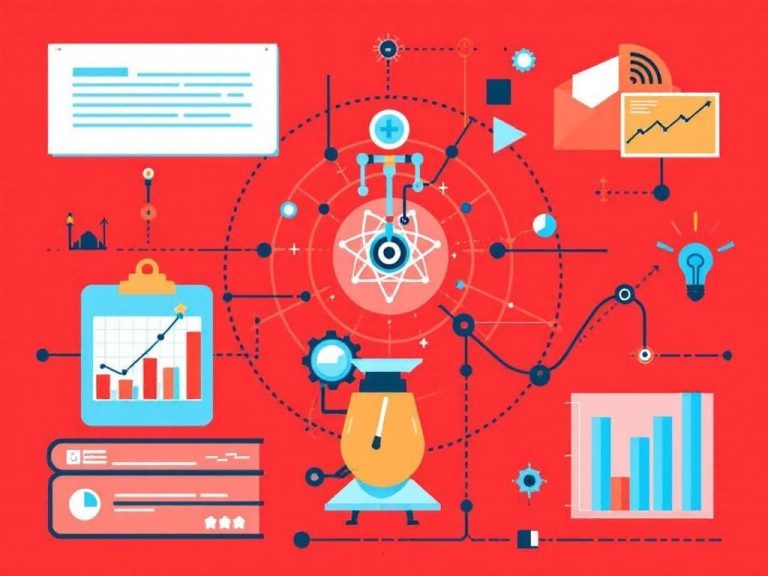In the competitive landscape of modern business, leveraging technology has become essential for maintaining a competitive edge. Among the various technological advancements, artificial intelligence (AI) stands out as a transformative force. One of the most compelling applications of AI is in pricing strategies. Businesses that harness AI-driven pricing can unlock significant profits, optimize their strategies, and respond swiftly to market changes. This article explores the intricacies of AI-driven pricing, its benefits, methodologies, and practical implementation.
The Evolution of Pricing Strategies
Pricing has always been a crucial aspect of business strategy. Traditionally, pricing decisions were made based on historical data, competitor analysis, and market trends. However, this approach often fell short of accurately reflecting real-time market dynamics. The advent of AI has revolutionized this realm by enabling businesses to utilize vast amounts of data to inform their pricing strategies.
Historical Context
Before the integration of AI, companies relied on:
- Cost-plus pricing: Setting prices based on production costs plus a markup.
- Competition-based pricing: Setting prices based on competitors’ pricing strategies.
- Psychological pricing: Manipulating prices to influence consumer perception.
While these methods helped in making informed decisions, they often lacked the agility to adapt to sudden market fluctuations.
Understanding AI-Driven Pricing
AI-driven pricing leverages algorithms and machine learning to analyze data in real-time. This approach allows businesses to adjust prices dynamically based on various factors, including:
- Supply and demand fluctuations
- Competitor pricing
- Consumer behavior patterns
- External economic factors
By utilizing predictive analytics, AI can forecast how changes in pricing will affect sales volume, enabling businesses to optimize their pricing strategies for maximum revenue.
Key Components of AI-Driven Pricing
The effectiveness of AI-driven pricing hinges on several crucial components:
- Data Collection: Gathering vast amounts of historical and real-time data from multiple sources.
- Algorithm Development: Creating algorithms that can analyze this data effectively.
- Machine Learning: Implementing machine learning techniques to refine the algorithms over time.
- Feedback Loops: Incorporating feedback mechanisms to adjust algorithms based on performance.
Benefits of AI-Driven Pricing
The implementation of AI-driven pricing strategies offers numerous advantages for businesses:
- Increased Revenue: By optimizing pricing dynamically, businesses can capture more value from their offerings.
- Enhanced Competitiveness: AI allows for real-time adjustments to stay ahead of competitors.
- Improved Customer Satisfaction: Fair pricing based on demand can lead to increased customer loyalty.
- Efficient Resource Allocation: More effective pricing can help allocate resources better, optimizing inventory management.
Case Studies
Several companies have successfully implemented AI-driven pricing strategies:
| Company | Strategy | Outcome |
|---|---|---|
| Amazon | Dynamic pricing based on competitor analysis and demand | Increased market share and revenue |
| Uber | Surge pricing based on real-time demand | Optimized driver allocation and increased profits |
| Airlines | Algorithmic pricing based on historical flight data and booking patterns | Increased revenue through optimized seat pricing |
Challenges in Implementing AI Pricing Solutions
Despite the potential benefits, businesses may encounter several challenges:
- Data Quality: Poor data quality can lead to inaccurate pricing models.
- Integration Issues: Difficulty in integrating AI systems with existing pricing infrastructure.
- Customer Perception: Concerns over fairness and transparency in dynamic pricing can harm brand reputation.
Addressing the Challenges
To overcome these challenges, businesses can:
- Invest in data cleansing and management strategies.
- Ensure robust integration between AI tools and existing systems.
- Communicate pricing strategies transparently to customers.
The Future of Pricing
The realm of pricing is evolving rapidly, with AI at the forefront. As technology continues to advance, we can expect:
- Greater Customization: More personalized pricing based on individual consumer behavior.
- Increased Use of Predictive Analytics: Enhanced forecasting capabilities leading to more proactive pricing strategies.
- Improved Collaboration: Cross-industry collaboration to share insights and improve pricing models.
Conclusion
AI-driven pricing represents a significant opportunity for businesses seeking to enhance their profitability and operational efficiency. By embracing this technology, companies can leverage data to inform their pricing strategies, respond to market changes, and ultimately unlock new revenue streams. As the landscape continues to evolve, organizations that adapt to these changes will undoubtedly thrive in the competitive marketplace.
FAQ
What is AI-driven pricing?
AI-driven pricing refers to the use of artificial intelligence technologies to analyze data and optimize pricing strategies in real-time, ensuring maximum profitability.
How can AI improve pricing strategies?
AI can improve pricing strategies by analyzing vast amounts of data, identifying trends, and making predictions about customer behavior and market conditions to set competitive prices.
What industries benefit from AI-driven pricing?
Industries such as e-commerce, retail, travel, and hospitality significantly benefit from AI-driven pricing by enhancing their pricing models and improving profit margins.
What are the key advantages of using AI for pricing?
Key advantages include dynamic pricing capabilities, improved forecasting accuracy, personalized pricing for customers, and the ability to quickly respond to market changes.
Is AI-driven pricing suitable for small businesses?
Yes, AI-driven pricing is suitable for small businesses as it can help them compete with larger companies by leveraging data analytics to make informed pricing decisions.
How can I implement AI-driven pricing in my business?
You can implement AI-driven pricing by integrating pricing optimization software, using data analytics tools, and continuously monitoring market trends and customer responses.




